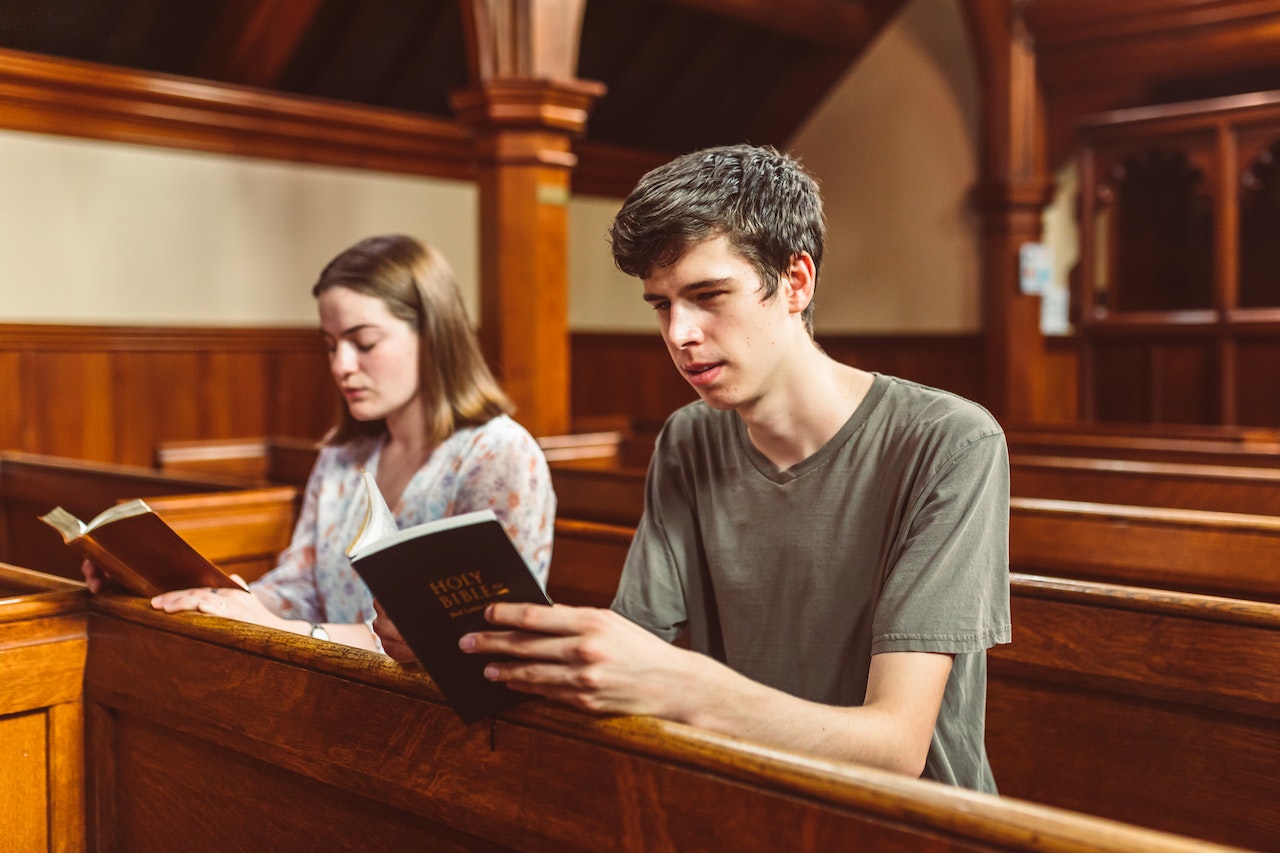Dancing in Christianity has been a topic of debate and interpretation among different denominations and individuals. While some Christian traditions embrace dancing as a form of worship and expression, others have historically discouraged or prohibited it. The permissibility of dancing in Christianity ultimately depends on the specific beliefs and practices of each individual or congregation.
Table of Contents
The Role of Dance in Christian Worship
Dancing has always been a form of expression and celebration in many cultures around the world. It brings people together, allows them to let loose, and can be a powerful way to connect with others. However, when it comes to Christianity, the role of dance in worship has been a topic of debate and discussion.
In the Bible, there are several instances where dance is mentioned. In the Old Testament, we see examples of people dancing as an expression of joy and celebration. For example, in the book of Exodus, after the Israelites crossed the Red Sea and were delivered from the Egyptians, Miriam, the sister of Moses, led the women in a dance of praise and thanksgiving.
Similarly, in the book of Psalms, we find numerous references to dancing as a way to worship and praise God. Psalm 149:3 says, “Let them praise his name with dancing and make music to him with timbrel and harp.” These verses suggest that dancing can be a form of worship and a way to honor God.
However, there are also passages in the Bible that caution against certain types of dancing. In the New Testament, for instance, we read about the story of John the Baptist and his encounter with Herodias. Herodias’ daughter danced for Herod and his guests, which pleased him so much that he promised to give her anything she wanted. She asked for the head of John the Baptist on a platter. This story serves as a warning against using dance for immoral or selfish purposes.
So, where does that leave us when it comes to dancing in Christianity? The answer is not black and white. Different Christian denominations and individual believers have varying views on the subject. Some churches embrace dance as a form of worship and incorporate it into their services. They see it as a way to express joy, gratitude, and reverence for God.
On the other hand, some Christians believe that dancing should be reserved for secular settings and not brought into the church. They argue that worship should be solemn and focused on prayer, scripture, and preaching. They worry that dancing may distract from the true purpose of worship and lead to a more entertainment-focused approach.
Ultimately, whether or not dancing is permitted in Christianity is a matter of personal interpretation and conviction. It is important to remember that the heart behind any form of worship is what truly matters. If dancing is done with a sincere desire to honor and glorify God, then it can be a beautiful expression of faith.
In conclusion, the role of dance in Christian worship is a complex and nuanced topic. While the Bible does mention instances of dancing as a form of worship, there are also cautionary tales against using dance for immoral purposes. Different Christian denominations and individuals have varying views on the subject, with some embracing dance as a way to express joy and gratitude to God, while others believe it should be reserved for secular settings. Ultimately, the heart behind any form of worship is what matters most, and if dancing is done with a sincere desire to honor and glorify God, then it can be a meaningful and powerful expression of faith.
Historical Perspectives on Dance in Christianity
Dancing has always been a form of expression and celebration in many cultures around the world. However, when it comes to Christianity, the question of whether dancing is permitted has been a topic of debate for centuries. To understand the current perspectives on this issue, it is important to delve into the historical perspectives on dance in Christianity.
In the early days of Christianity, dance was often associated with pagan rituals and was seen as a sinful activity. The early Christian leaders believed that dancing could lead to immoral behavior and distract people from their devotion to God. As a result, dancing was discouraged and even condemned in some Christian communities.
However, as Christianity spread and adapted to different cultures, the views on dance began to change. In the Middle Ages, dance became an integral part of religious ceremonies and celebrations. It was seen as a way to express joy and gratitude to God. Dance was used to tell biblical stories and to bring people together in worship.
During the Renaissance period, dance became even more prominent in Christian worship. It was seen as a way to glorify God through physical movement and artistic expression. Many churches incorporated dance into their liturgical practices, and it became an important part of religious festivals and processions.
However, as the Protestant Reformation took place in the 16th century, dance once again came under scrutiny. The reformers believed that the focus should be on the Word of God and that any form of physical expression, including dance, could distract from the true message of Christianity. Dancing was once again discouraged and even banned in some Protestant communities.
In the modern era, the views on dance in Christianity have become more diverse. Some Christian denominations embrace dance as a form of worship and celebration. They believe that dancing can be a way to express joy and gratitude to God, as well as a way to bring people together in community.
Other Christian denominations still view dancing with caution. They believe that dancing can be a temptation to sin and can lead to immoral behavior. These denominations often discourage dancing and emphasize the need for modesty and self-control.
It is important to note that the Bible does not explicitly address the issue of dancing. There are references to dancing in the Old Testament, where it is often associated with celebrations and joyous occasions. In the New Testament, dancing is not mentioned directly, but there are references to praising God with music and singing.
Ultimately, the question of whether dancing is permitted in Christianity is a matter of personal interpretation and cultural context. Some Christians may feel comfortable incorporating dance into their worship and celebrations, while others may choose to abstain from it. It is important for each individual and community to prayerfully consider their beliefs and convictions on this matter.
In conclusion, the historical perspectives on dance in Christianity have evolved over time. From being condemned as a sinful activity to being embraced as a form of worship, dance has had a complex relationship with Christianity. Today, the views on dancing in Christianity vary among different denominations and individuals. Ultimately, the decision to dance or not to dance is a personal one, guided by one’s understanding of the Bible and their relationship with God.
Biblical Interpretations of Dance in Christianity
Dancing has always been a form of expression and celebration in many cultures around the world. It brings people together, allows them to let loose, and can be a joyful experience. However, when it comes to Christianity, there has been some debate about whether dancing is permitted or not. In this article, we will explore the biblical interpretations of dance in Christianity.
The Bible does mention dance on several occasions, both in the Old and New Testaments. In the Old Testament, we see examples of dance being used as a form of worship and celebration. For instance, in the book of Exodus, after the Israelites crossed the Red Sea, Miriam, the sister of Moses, led the women in a dance to celebrate their freedom. This dance was an expression of gratitude and joy towards God.
Similarly, in the book of Psalms, we find numerous references to dancing. Psalm 149:3 says, “Let them praise his name with dancing and make music to him with timbrel and harp.” This verse suggests that dancing can be a way to praise and worship God.
In the New Testament, we see dance mentioned in a different context. In the Gospel of Matthew, there is a story about King Herod and his stepdaughter, who danced for him and his guests. This dance, however, had a negative connotation as it led to the beheading of John the Baptist. Some interpret this story as a cautionary tale against the misuse of dance and its potential to lead to sinful behavior.
So, what do these biblical interpretations tell us about dancing in Christianity? It seems that dance itself is not inherently sinful or forbidden. In fact, it can be a form of worship and celebration when done with the right intentions. However, like any other activity, it can also be misused and lead to sinful behavior.
It is important to note that different Christian denominations may have varying views on dancing. Some may be more conservative and discourage dancing altogether, while others may embrace it as a form of expression and celebration. Ultimately, it is up to each individual and their personal convictions to determine whether dancing is appropriate for them.
In conclusion, the biblical interpretations of dance in Christianity suggest that it is not inherently sinful or forbidden. Dance can be a way to express joy, gratitude, and worship towards God. However, it is important to approach dancing with the right intentions and be mindful of its potential to lead to sinful behavior. Ultimately, each individual should prayerfully consider their own convictions and seek guidance from their faith community. So, if you enjoy dancing, go ahead and dance with a joyful heart!
Contemporary Views on Dance and Christianity
Is dancing permitted in Christianity? This is a question that has sparked much debate and discussion among Christians throughout history. While some believe that dancing is a sinful and worldly activity, others argue that it can be a form of worship and expression. In this article, we will explore the contemporary views on dance and Christianity.
One of the main arguments against dancing in Christianity is the association with worldly pleasures and immorality. Some Christians believe that dancing can lead to lustful thoughts and actions, and therefore should be avoided. They point to biblical passages that warn against the temptations of the flesh and the dangers of indulging in sinful activities.
However, there are also many Christians who see dance as a beautiful and joyful expression of worship. They argue that dancing can be a way to praise and glorify God, just like singing or playing an instrument. They point to biblical examples of dancing, such as King David dancing before the Lord, as evidence that it can be a legitimate form of worship.
In recent years, there has been a growing acceptance of dance within the Christian community. Many churches now incorporate dance into their worship services, using it as a way to engage the congregation and express their love for God. Dance ministries have also emerged, with dancers using their talents to spread the message of Christ and inspire others.
Contemporary Christian artists have also embraced dance as a form of expression. In music videos and live performances, they often incorporate choreography and movement to enhance the message of their songs. This has helped to break down the stigma surrounding dance in Christianity and show that it can be a powerful tool for spreading the gospel.
However, it is important to note that not all forms of dance are accepted within the Christian community. Some Christians believe that certain styles of dance, such as those that are overtly sexual or promote immoral behavior, should still be avoided. They argue that while dance can be a form of worship, it should always be done in a way that honors God and aligns with biblical principles.
Ultimately, the question of whether dancing is permitted in Christianity is a personal one. It is up to each individual to prayerfully consider their own convictions and seek guidance from God. What may be acceptable for one person may not be for another, and it is important to respect and understand different viewpoints within the Christian community.
In conclusion, the contemporary views on dance and Christianity vary greatly. While some Christians believe that dancing is a sinful and worldly activity, others see it as a form of worship and expression. The acceptance of dance within the Christian community has grown in recent years, with many churches incorporating it into their worship services and artists using it as a tool for spreading the gospel. However, it is important to approach dance with discernment and ensure that it aligns with biblical principles. Ultimately, the decision of whether to dance or not is a personal one that should be made in prayer and seeking guidance from God.
Conclusion
In conclusion, dancing is a topic that varies among different Christian denominations and interpretations of scripture. While some Christians believe that dancing can be a form of worship and expression, others may view it as inappropriate or sinful. Ultimately, whether dancing is permitted in Christianity depends on individual beliefs and the specific context in which it takes place.
For licensing reasons, we must provide the following notice: This content was created in part with the help of an AI.


